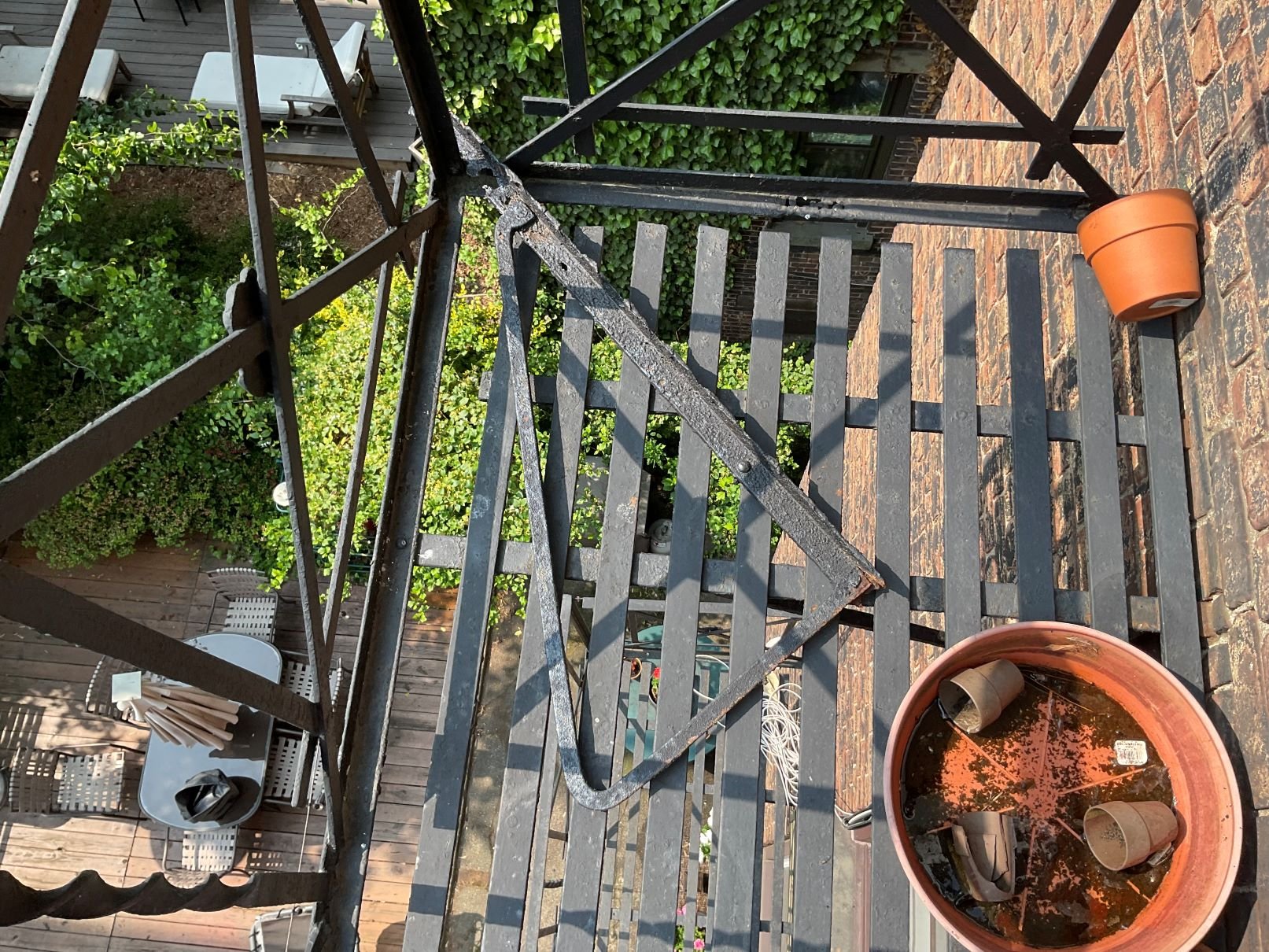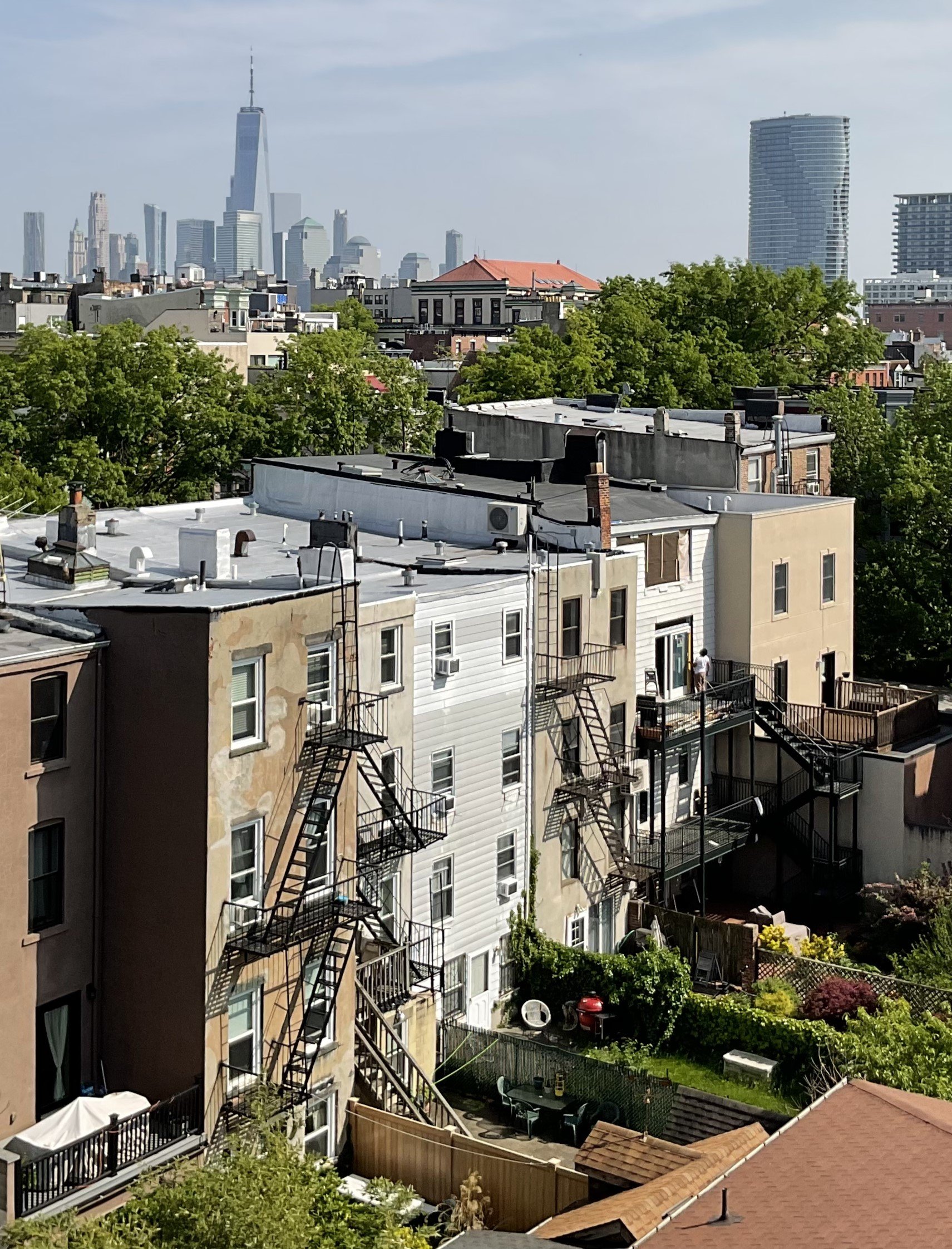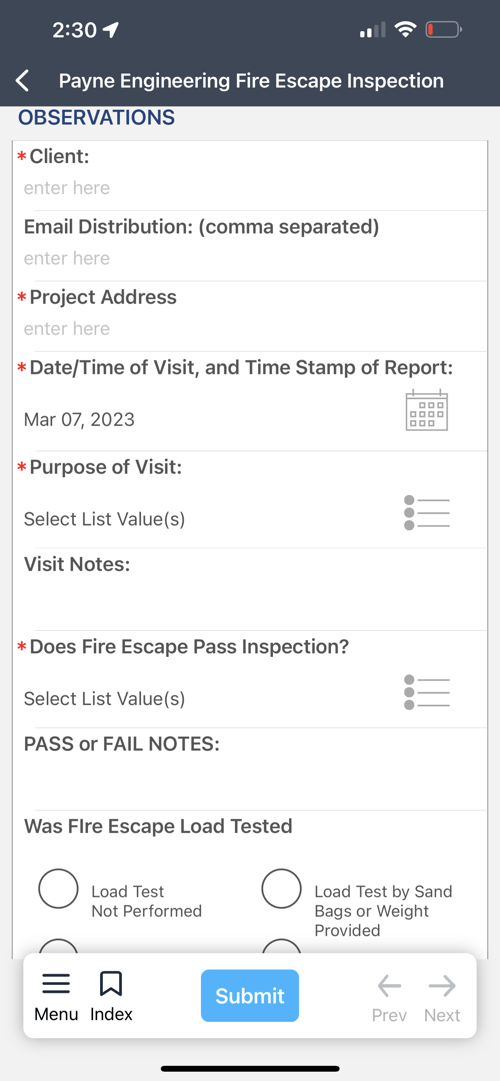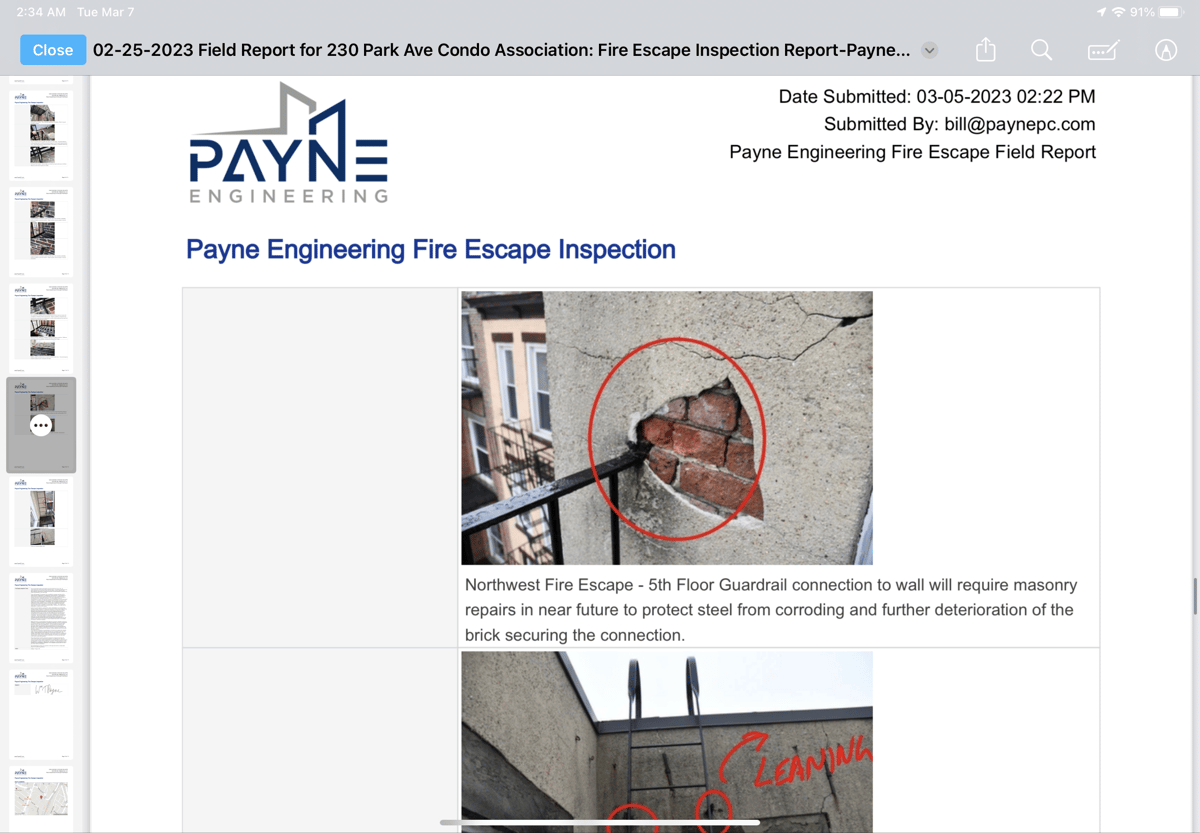Fire Escape Inspections
No one has every bragged about their shiny new fire escape, so let us help you get your fire escape repaired and/or certified in the most practical way possible.

Only What You Need...
...NO MORE and NO LESS... Read our unique approach below and learn why you will never want a "Payne Free" fire escape inspection again.
We know that no one likes one more mandatory inspection or inconvenience, but you can trust that we will get you through this prudently and Payne-fully.

Three Things that Don't Belong?
We know you use your fire escape for your container gardens. Make sure the pots are gone, at least when we are there,
...and save us some tomatoes...
BUT LOOK, the third item is a support bracket that's supposed to hold up your neighbor's garden above!

Shouldn't Break the Bank
Unlike other fire escape inspection companies, Payne Engineering has lot's of other things they'd like to help you with, so let's save some money on the fire escape and find more exciting projects to work on together.
We will provide both sound engineering judgement and client advocacy to help ensure practical solutions are provided for any concern.
Our Fire Escape Inspections are Different
The Fire Code and/or local ordinances typically require a 5-year inspection or certification of your fire escape. This is important for the safety of the building's residents....
... but let's face it, no one has ever bragged about their beautiful new shiny fire escape. Payne Engineering is able to structurally repair fire escapes that other fire escape inspection firms would typically make you replace, or completely overhaul.
Here is a typical excerpt from the latest proposed code update to the NJ
1031.7.3 Examination. Fire escape stairways and balconies shall be examined for structural adequacy and safety by a registered design professional every 5 years. An inspection report shall be submitted to the fire code official after such examination.


Click the Tabs Below To See Relevant Codes
New Jersey Fire Prevention Code
Proposed Repeal and New Rule: N.J.A.C. 5:70-3.2 – The State Fire Prevention Code - Published in New Jersey Register, Monday June 5, 2023:
1031.7.3 Examination. Fire escape stairways and balconies shall be examined for structural adequacy and safety by a registered design professional every 5 years. An inspection report shall be submitted to the fire code official after such examination.
New Jersey City Fire Code
New Jersey Fire Code
New Jersey Uniform Fire Code 2015
New Jersey Uniform Fire Code 2015
Formal Technical Opinion-3 - Access the valuable resource on fire escapes issued in March 1985 and revised in October 2016 by visiting the link:
NEW JERSEY FIRE ESCAPE CODE 1028.6 (Check, this might be old reference)
-
Exterior egress all exit discharge, exterior stairways and fire escapes shall be kept free of snow and ice.
-
Any new jersey fire escape or exterior stairway found to be in a state of deterioration or determined to be unsafe by the fire official shall be repaired immediately.
-
Depending upon the structural condition, a load test of any fire escape shall be conducted before the escape is returned to service in accordance with n.j.a.c.5.23, the uniform construction code.
N.J.A.C 1031.6 Exterior egress. “All exit discharge, exterior stairways and fire escapes shall be kept free of snow and ice. Any fire escape or exterior stairway found to be in a state of deterioration or determined to be unsafe by the fire official shall be repaired immediately. Depending upon the structural condition, a load test of any fire escape shall be conducted before the escape is returned to service in accordance with the N.J.A.C. 5:23, the Uniform Construction Code”.
N.J.A.C 1031.1.1 Storage. “Combustible or flammable material shall not be placed, stored or kept in any portion of an exit, elevator car or hoist way, or at the bottom of a stairway, fire escape or other means of escape, unless such space is enclosed and protected as required by the construction code in effect at the time of first occupancy. Such storage shall be located so the presence or burning of the materials will not obstruct or render hazardous the means of egress.”
N.J.A.C 102.1.1 Any dangerous or hazardous conditions that are outlined in 1 through 10 below shall be removed or remedied in accordance with the provisions of N.J.A.C. 5:70-2.10:
Reference: N.J.A.C. 5:23-6, Rehabilitation Subcode
5:28-2.1 Lead-safe maintenance requirements
(a) Each tenant-occupied residential building constructed before 1978 shall be subject to the requirements for lead-safe maintenance contained in this section. All such buildings shall undergo a combined inspection and risk assessment, and lead hazard control work in accordance with (b) below or shall comply with the requirements for standard treatments contained in (c) below. Following the performance of lead hazard control work or standard treatments, all buildings shall be subject to the requirements for on-going evaluation and maintenance contained in (d) below.
For more of the NJ lead-safe requirements please visit this code at
Jersey City
(9) Exterior balconies, fire escapes, landings, porches, exterior bridges and stairs.
(a) Exterior balconies, fire escapes, landings, porches, exterior bridges and stairs shall be provided with banisters or railings properly designed and maintained to minimize the hazard of falling and also shall be maintained free of holes and cracks, clear of obstructions and in structurally sound condition.
(b) Without limiting the generality of Subsection B(9)(a), the banisters or railings shall be required on the open side of a stairway, fire escape, balcony, exterior bridges, porch, landing and stairwell. In addition, the banister or railing shall be coated with a durable fire-retardant and heat-resistant coating that shall meet Class A flamespread rating of the American Society for Testing and Materials and shall be overcoated with a semigloss, fire-inert, enamel coating capable of meeting the durability standard set by Federal (DOD) Specification No. TT-P-0026B.
(c) All fire escapes, exterior bridges and egress balconies shall be examined and/or tested, and certified for structural adequacy and safety every five (5) years, by a professional engineer, architect or other qualified professional acceptable to the Fire Prevention Bureau; said engineer or professional shall then submit an affidavit to the Fire Prevention Bureau attesting to the structural adequacy of the fire escape/exterior bridge/egress balcony. Once the affidavit is received and approved, a green tag provided by the Bureau of Fire Prevention bearing the signature of the Fire Prevention Officer and the year of inspection shall be affixed to the ladder of the fire escape or railing of the exterior bridge or egress balcony by the property owner.
(d) Any fire escape, exterior bridge or egress balcony found to be in a state of deterioration or determined to be unsafe by the Fire Prevention Bureau shall be repaired immediately. Depending upon the structural condition, a load test of any fire escape shall be conducted before the escape is returned to service in accordance with the N.J.A.C. 5:23, the Uniform Construction Code.
(e) The affidavit of structural adequacy required by Section 254-45(B)(9)(c) shall be submitted by the owner to the City's Fire Prevention Bureau no later than December 31, 2016 and then submitted every five (5) years thereafter.
NEWARK NJ
2:10-1.4E.6Exterior Protection. [Added 10-19-2022 by Ord. No. 6PSF-A, 10-19-2022]
-
Exterior stairs, porches, entrance platforms, fire escapesand the railings thereon shall be maintained in a safe and sound condition.
IFC 2015 1104.16 Fire Escape PDF copy actual code
2012 IFC 1104.16.5.1 Fire escape stairs must be examined every 5 years ,by design professional or others acceptable and inspection report must be submitted to the fire code official.
IBC 1001.3.3 All fire escapes shall be examined and/or tested and certified every five years by a design professional or others acceptable who will then submit an affidavit city official.
NFPA LIFE SAFETY CODE 101 7.2.8.6.2 The Authority Having Jurisdiction (AHJ) shall approve any fire escape by Load Test or other evidence of strength (Certification).

